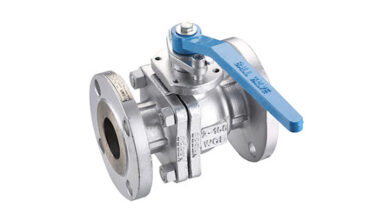How to Install Solar Panels For Home in New York

To install a solar home panel, you need to have a south-facing roof. The sun is the main source of energy, so it is important to position the panels at an angle. The panels absorb sunlight and convert it to electricity. Then, you can store this energy in a battery to use at night or on cloudy days. Then, you can continue using the electricity produced from the panels. That’s the process of solar energy harvesting.
The cost of installing a PV installation is relatively straightforward. Solar installation companies will provide you with a quote. Determining any government subsidies for solar power is a more complicated task, though. In general, the closer you are to the equator, the more solar energy you’ll receive. You can find detailed information on solar irradiation levels at your local National Renewable Energy Laboratory. You can also check out your state’s solar park website to see which incentives apply to you.
Solar Panels for Homes
In many areas of the United States, solar energy has become the cheapest form of electricity. Depending on your electricity usage and location, a solar system can save you up to 50% on your electric bill. Ultimately, you’ll save more money than you paid for the system! And because power companies will reimburse you for excess energy, you’ll be able to recover the cost of the system from the savings on your electric bill.
Most homeowners in New York City live in multi-family apartments and condominiums. There are a number of solar options that will fit your building’s goals and priorities. Small businesses in the city often experience huge ConEd bills and may not have the budget to hire an installation team. But if you have the funds to invest in a high-quality solar panel system, you’ll be glad you did. You’ll be happier with the outcome than you’d have if you had spent a lot more money on a low-quality solar panel.
The solar home panels you purchase can be installed by a professional solar company. They are an excellent option for homes and offices that need power. They can be installed on rooftops, and they can generate electricity for a family’s needs or office. Moreover, solar panels can be installed at any point, even in the remotest corners of the world. And you’ll feel a great sense of accomplishment when you see the savings in your energy bill.
Solar on Grid System
If you’re considering installing solar home panels, you’ll need to decide on the size and direction of the panels. It’s best to consult with a solar professional to get the right size and angle for your home. It’s also important to know that there are various types of solar panels for your roof type. You will need to determine your needs and determine the best location before you can begin the installation process. It’s also important to find an installer who can install the solar home panels on your roof.
When it comes to installation, you can choose a grid-tied or an off-grid system. Grid-tied systems are connected to a utility grid and are more expensive than off-grid systems. The former is more popular for homes that don’t have solar power at their rooftops. However, if you don’t have a sunny location, you can install a system that isn’t connected to the utility grid.
Solar Panel Wholesaler
The temperature coefficient of solar home panels is directly related to the amount of power produced. The higher the temperature, the lower the output. A lower coefficient is better for solar energy production, but you should be aware that this factor does influence your monthly energy bill. While solar home panels aren’t free of cost, they can save you a lot of money in the long run. They can also increase the value of your home. This is an excellent investment for any homeowner, but they don’t come cheap.
The installation of solar home panels is a high-demand occupation. There are many benefits to this career. Not only will solar home panels power your home, but they will also reduce your carbon footprint. It’s a win-win situation for the environment, and it can improve the value of your house. You can earn good money while helping the environment. You don’t need to be a rocket scientist to become a solar home technician.
Solar System In Pune
Putting up a solar system on your home will help you save money on your monthly electricity bill. A 1-kW rooftop solar power system can save you up to Rs 550 a month, which is a substantial amount of money. Another benefit is that going solar will have a positive impact on the environment. MYSUN is a solar energy company that helps homeowners install rooftop solar power systems in Pune. We are here to help you choose the right solar system for your home.
In order to make rooftop solar power affordable for all homeowners, you need to look for a company that specializes in installing solar PV systems. Some companies specialize in installing solar thermal systems, while others focus on LED lighting solutions. The most common types of systems are the residential type. The prices for these are very competitive, which makes them an excellent choice for many people. While some solar power installations are simple, others are complex. In any case, you can expect the best service when you choose a company.
When it comes to installation, there are many companies in Pune that offer rooftop solar. These companies have expertise in designing and installing solar PV systems. In addition to the installation of residential and commercial rooftop solar systems, they also offer installation and commissioning services for solar thermal plants. Their knowledgeable engineers are dedicated to providing top-notch services and products to their clients. These companies have a proven track record of providing high-quality service, and their goal is to meet your expectations.
Solar Panel For Home
Choosing a solar panel for your home is a great investment, but you need to be sure you choose the right one. There are many options available, and there are many factors that should be considered before making the purchase. The first factor to consider is your electricity usage. If you are using a lot of electricity, you should install 15 to 18 panels. A typical fridge consumes 250 watts and runs four hours a day. This is enough energy to power a few devices. You can also use the power from the panels to run electronics, like a laptop or a computer.
A second factor to consider is the weather. The location of the home you live in will affect the output of solar energy. If it is very cold or rainy, the best option is a high-efficiency model. The higher the efficiency, the more energy it produces. A low-efficiency model may not work well when you are in an area with high snowfall or strong winds. A good quality solar panel will withstand the harshest conditions, so it’s important to choose a high-quality one.
There are many factors to consider when choosing a solar panel for home. The amount of energy your home uses will determine the number of panels you need. The cost of solar panels depends on the amount of energy you need. The larger your solar array, the more panels you will need. If you plan to use the energy that your system produces, you should choose a high-quality product that will last for many years. A high-quality model will provide more energy than a lower-quality one.
Solar Rooftop Installation
The cost of solar rooftop installation can be a substantial barrier to businesses. However, with careful planning, these systems can provide significant energy savings and help companies continue their progress. The first step to successful solar rooftop installation is choosing a respected provider. A company that focuses on quality installations and after-sales care is a smart choice. By choosing the best company, you can be sure that your solar rooftop system will be as effective as possible and will be cost-effective over the long run.
Before you begin the installation process, you need to prepare your rooftop space. This involves inspecting the type of roof you have and the size of the roof frame. You’ll also need to seek authority approval, which can be obtained through structural drawings and calculations. After obtaining the proper permits and permissions, you’ll need to prepare all the necessary documents. To make the process as easy as possible, hire a company that has experience in solar rooftop installation.
During the solar rooftop installation process, it is important to thoroughly prepare your rooftop space. For instance, you must determine the type of roof you have, the size of your roof frame, and the type of roof. Then you must apply for authority approval, which will require the submission of a building construction permit, structural drawings, and calculation. It will also be important to have a team of specialists in your area who are highly skilled. This will help ensure that the system is cost-effective, safe, and meets all your needs.
Solar System in Aurangabad
If you have decided to install a solar system in your home, you will first need to look for a reliable dealer in Aurangabad. There are many reasons why you should purchase a solar panel in Aurangabad. These advantages will help you decide if this option is right for your home. These panels are extremely durable and are ideal for homes that receive a lot of sunlight during the day. You can also get some financial benefits from installing a solar panel in your home.
When it comes to choosing a solar panel, you will need to consider the brand you want to purchase. The price will vary depending on the type of solar panel you choose. For example, if you decide to buy a 500 watt solar panel, it will cost you about $600. A larger system will cost you around $7000. However, if you decide to purchase a more efficient system, you will be able to generate more power than you use.
You will also need to consider the cost of a solar pump. This is a key component of the solar off-grid programme. The government of India has been encouraging the use of solar energy and plans to increase its capacity by over fifteen times by the year 2021. An on-grid system is one where your solar power system is connected to the utility grid and if it generates more than what you need, you send it back to the grid and get compensated for it. Then, you can use the power you produce on-grid to meet your energy needs.
For more valuable information visit the website





